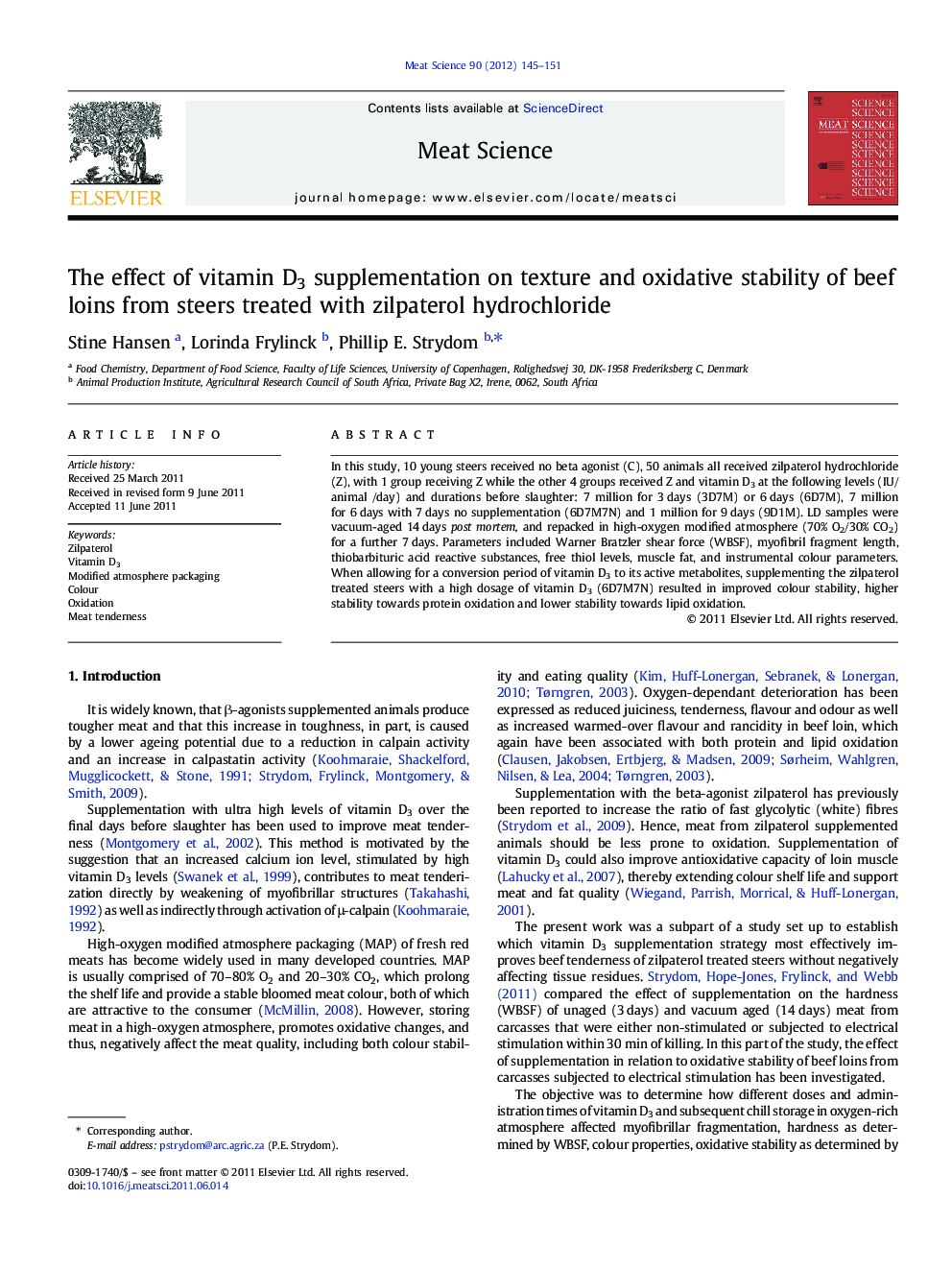| Article ID | Journal | Published Year | Pages | File Type |
|---|---|---|---|---|
| 5792726 | Meat Science | 2012 | 7 Pages |
In this study, 10 young steers received no beta agonist (C), 50 animals all received zilpaterol hydrochloride (Z), with 1 group receiving Z while the other 4 groups received Z and vitamin D3 at the following levels (IU/animal /day) and durations before slaughter: 7 million for 3Â days (3D7M) or 6Â days (6D7M), 7 million for 6Â days with 7Â days no supplementation (6D7M7N) and 1 million for 9Â days (9D1M). LD samples were vacuum-aged 14Â days post mortem, and repacked in high-oxygen modified atmosphere (70% O2/30% CO2) for a further 7Â days. Parameters included Warner Bratzler shear force (WBSF), myofibril fragment length, thiobarbituric acid reactive substances, free thiol levels, muscle fat, and instrumental colour parameters. When allowing for a conversion period of vitamin D3 to its active metabolites, supplementing the zilpaterol treated steers with a high dosage of vitamin D3 (6D7M7N) resulted in improved colour stability, higher stability towards protein oxidation and lower stability towards lipid oxidation.
⺠Beta agonists could harm meat colour and drip loss due to more white fibres. ⺠High-oxygen MAP prolongs shelf life but promotes oxidative quality deterioration. ⺠Ultra high levels of vitamin D3 supplements may improve anti-oxidative capacity. ⺠Certain vitamin D3 supplement levels reduced protein oxidation and improved colour. ⺠Certain vitamin D3 supplement levels increased muscle lipid oxidation.
